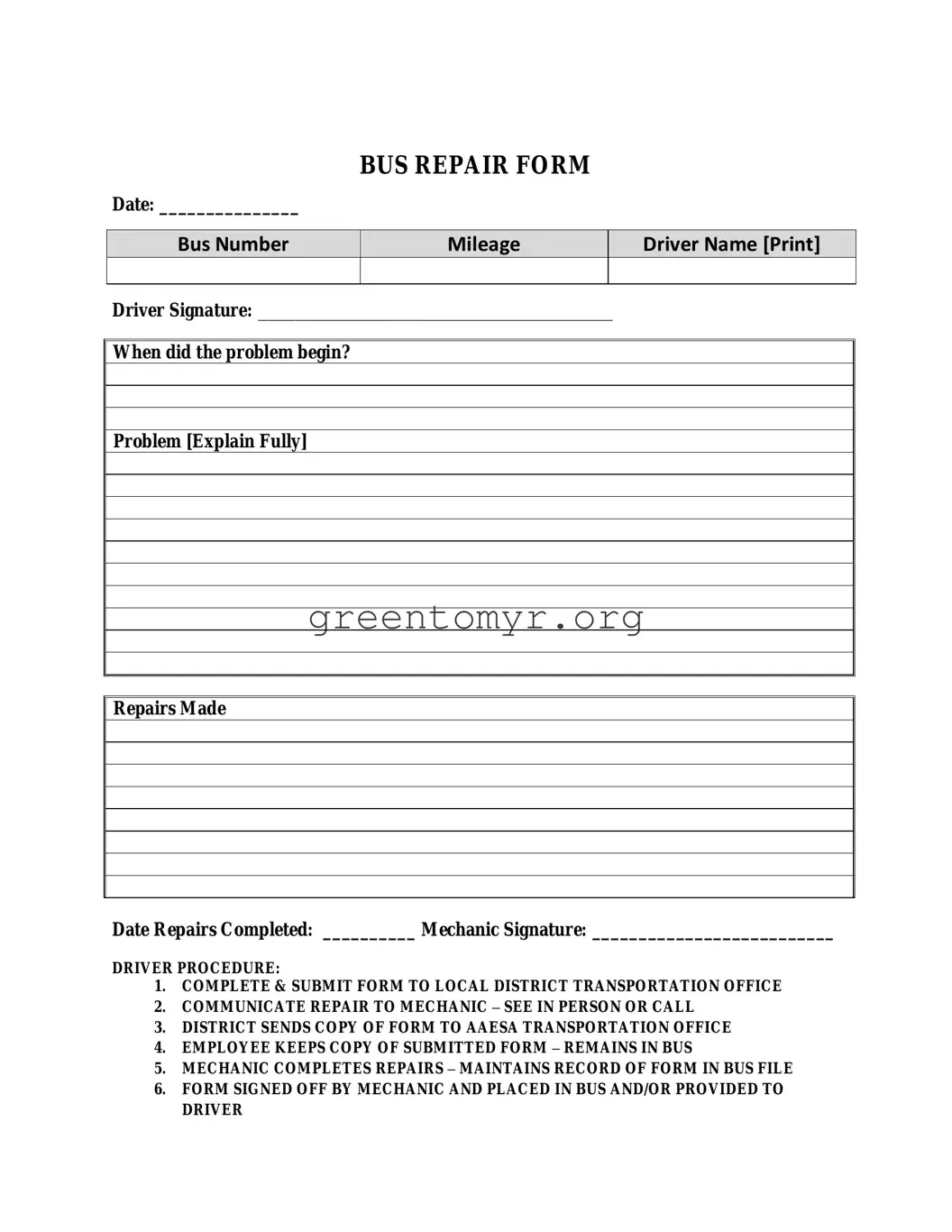When completing the Bus Repair form, you will need to provide the following information:
-
Date of the report.
-
Bus number.
-
Mileage of the bus.
-
Driver's name, printed clearly.
-
Driver's signature.
-
When the problem began, including a detailed explanation of the issue.
-
Details of repairs made, including the date repairs were completed.
-
Mechanic's signature once repairs are finished.
What should I do if I notice a problem with the bus?
If you notice a problem with the bus, first complete the Bus Repair form with all requested details. Ensure that you provide a full explanation of the issue. It’s also important to communicate the situation with your mechanic either in person or by phone. This ensures that they are aware and can prioritize the necessary repairs.
You should submit the completed form to your local district transportation office. This allows for proper documentation and tracking of the repair process.
Once you submit the form, your local district will send a copy to the AAESA transportation office. You must keep a copy of the submitted form for your records. It should remain with the bus for reference and record-keeping.
Do I need to communicate the repair issue to the mechanic? If so, how?
Yes, it is essential to communicate the repair issue to your mechanic. You can do this by either discussing it in person or by giving them a call. Clear communication helps the mechanic understand the problem and address it effectively.
How do mechanics document the repairs made?
Mechanics will maintain a record of the completed Bus Repair form for their files. After making the repairs, the mechanic will sign off on the form, which indicates that the issue has been resolved. This signed form may then be placed in the bus or provided directly to the driver.
As a driver, your responsibility includes filling out the Bus Repair form accurately and submitting it to the local district office. You must also communicate with the mechanic about the repairs and keep a copy of the form with the bus until the repairs are completed.
What should I do if repairs are incomplete or not done correctly?
If repairs are incomplete or not performed correctly, reach out to your mechanic immediately to discuss your concerns. It’s critical to resolve any issues as soon as possible to ensure the safety and functionality of the bus. Always keep a record of any follow-up communications regarding the repairs.
To ensure efficient processing of your Bus Repair forms:
-
Fill out the form completely and accurately.
-
Submit it promptly to your local district transportation office.
-
Communicate clearly with your mechanic about the issues.
-
Keep good records of all correspondence and forms.
Following these steps will help streamline the repair process and improve overall safety and maintenance of the bus fleet.

